Tyres could be a metaphor for the entire Tour de France. On the face of it, not much has changed in the past half-century or more. In reality, nothing is still the same. Long gone are the skinny tubulars pumped up to within a fart of exploding, replaced by mostly 28 mm wide tubeless tyres run much softer.
So, with vernier callipers in hand, we decided to take a closer look at which tyres, specifically which tyre widths, the riders rely on as they do their big lap of France. While this test was far from exhaustive – we couldn’t measure every wheel and tyre combination at every team – we did find some interesting tyre choices and fascinating measured widths in the paddock at this year’s Tour de France.

Tadej Pogačar (UAE Team Emirates) has changed both halves of his tyre and wheel combo for 2023. Enve and Continental replace Campagnolo and Pirelli. The Slovenian national champ and two-time Tour winner is racing the road stages on Continental’s time trial-specific Grand Prix 5000 TT TR 28 mm tyres. However, these tyres blow up to a measured 31 mm wide on the Enve 4.5 SES with their 25 mm internal rim width. 31 mm wide tyres for road stages at the Tour de France? The cyclocross riders of just a decade ago must be in shock.

Groupama-FDJ’s tyre selection looks similar but is in fact quite different. The team is racing with tubeless 25 mm Continental GP5000 S TRs which we measured at 26 mm on these Shimano Dura-Ace C50 rims.

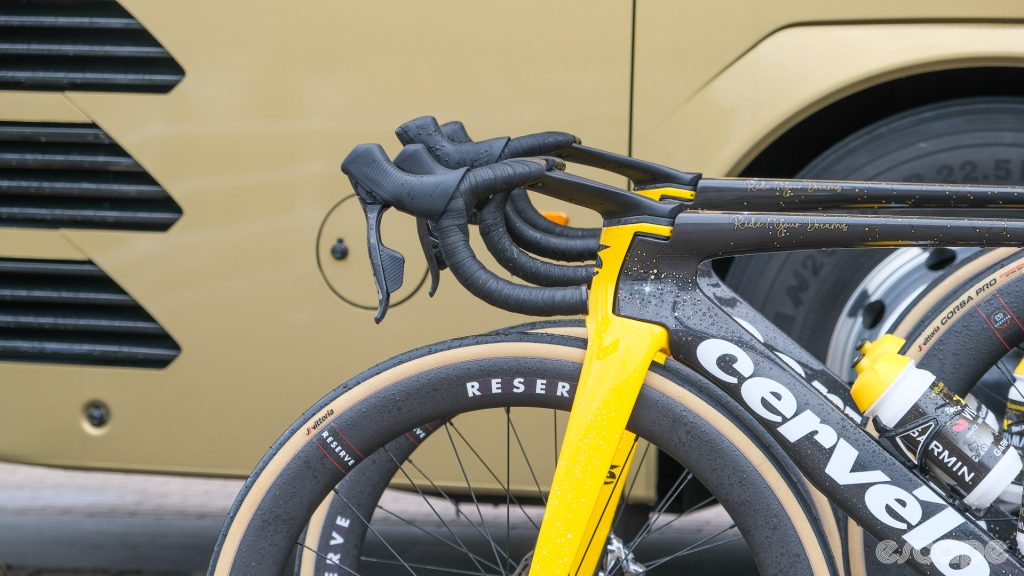
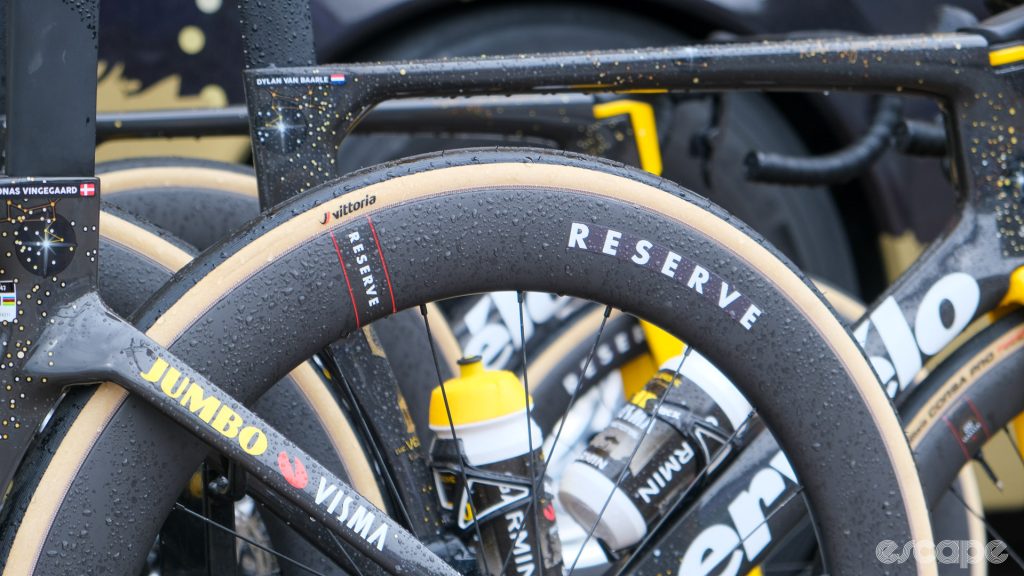
And then we come to the many wheels of Jonas Vingegaard (Jumbo-Visma). The defending Tour champ rolled out for the pre-Tour team presentation on this Reserve 52|63 wheelset with the new 28 mm Vittoria Corsa Pros set up tubeless. With a 25 mm front and 24 mm rear internal rim width, the 28 mm tyres actually blow up to a measured 30 mm (although, I forgot to note if the measurement was taken on the front or rear.)

Mike Woods (Israel-Premier Tech) is definitely not riding Conti GP 5000s marked 28 mm, but measuring 30 mm front and rear on what appear to be new Black Inc low-profile climbing wheels.
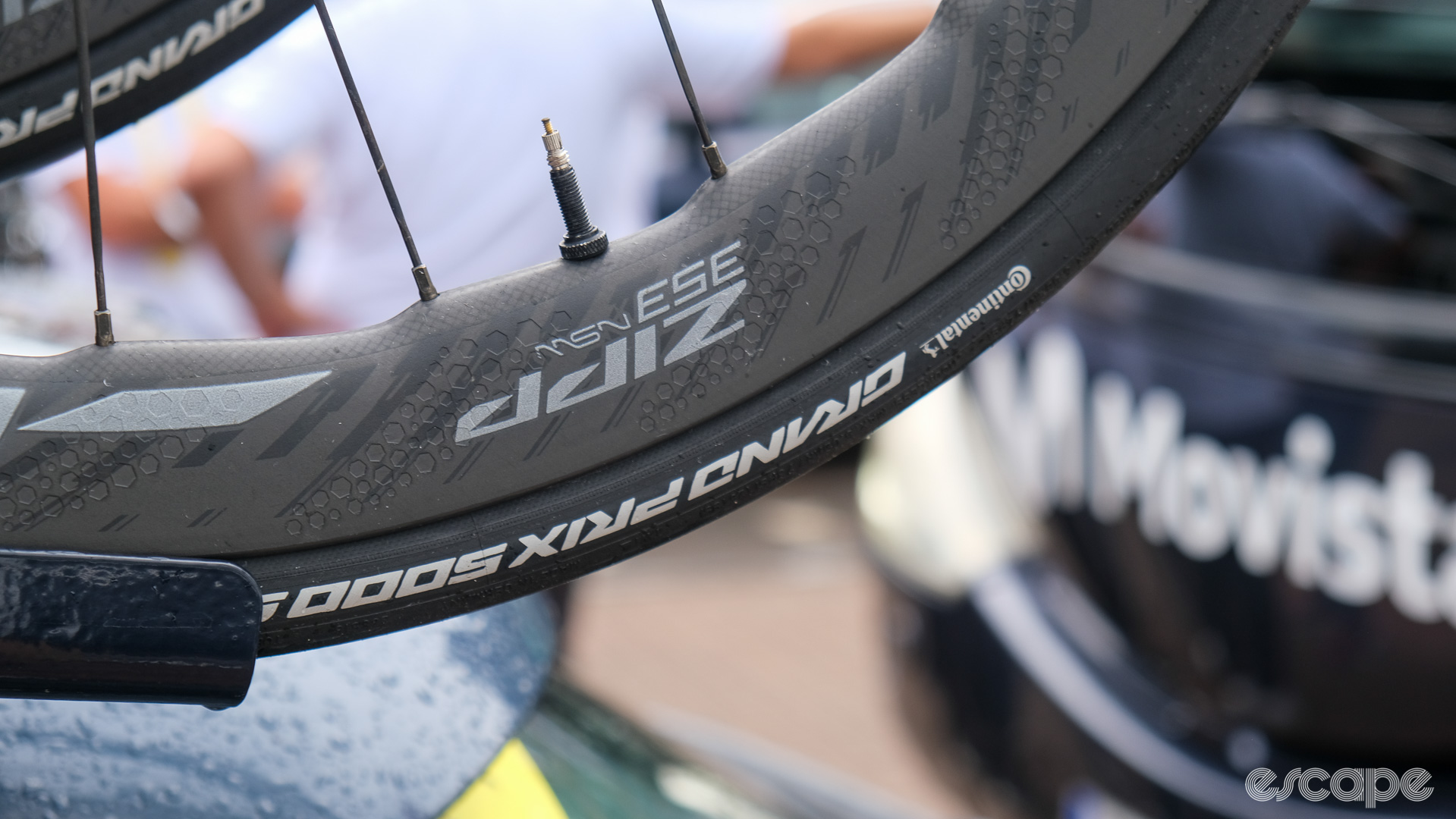
A lot of teams are running some variation of Continental’s GP 5000 S TR tyres, including Movistar. With so many teams running the same tyre on various different rims, this does offer us the chance to compare rim-to-rim variances in tyre widths. These 28 mm tyres inflate to 31 mm on these Zipps with a 25 mm internal rim width.

The Specialized Turbo Cotton tyres belonging to Mathieu Burgaudeau (TotalEnergies) are stamped 28 mm and measure 28 mm on these Roval Alpinist wheels.
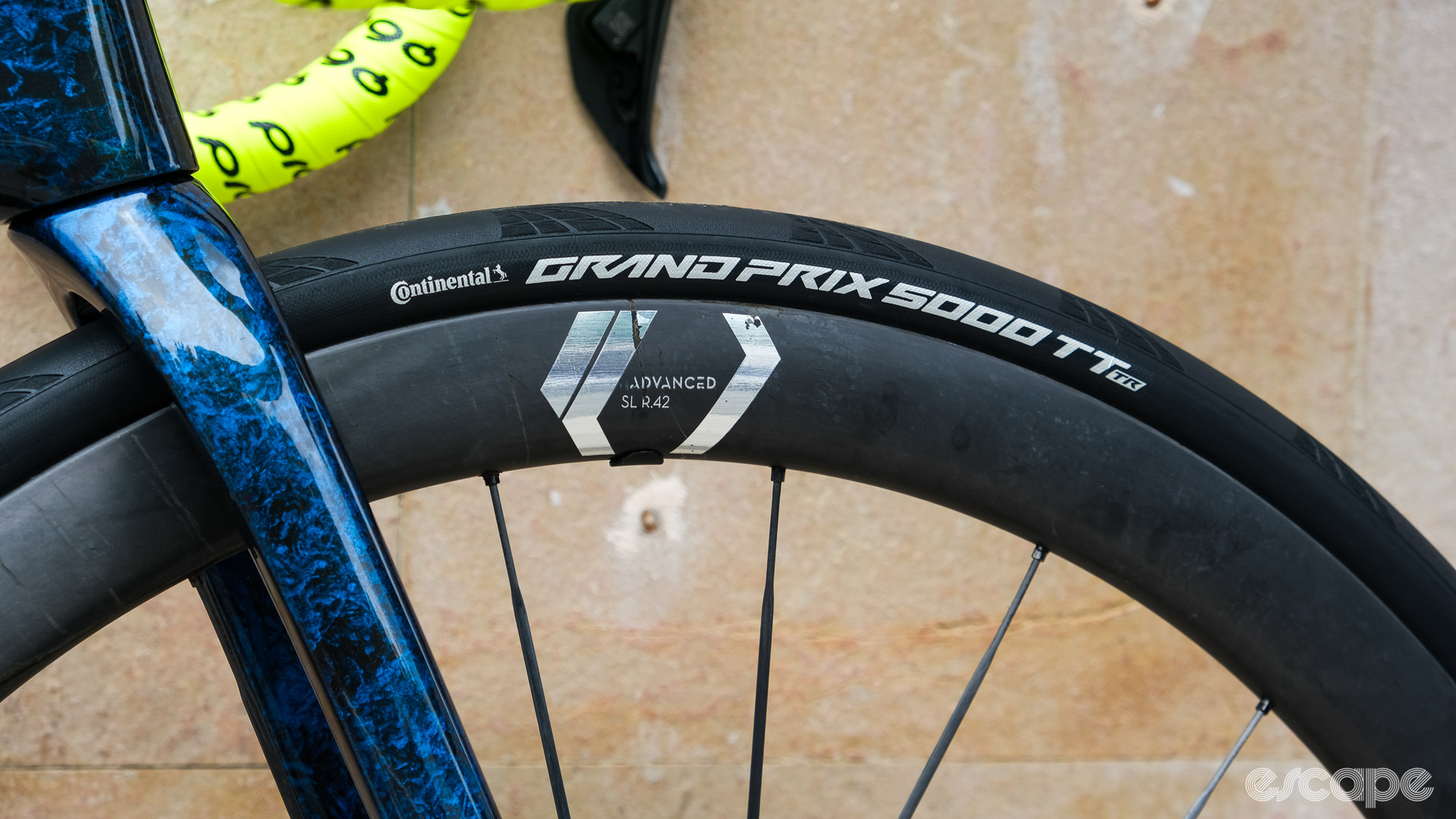
Another team, another GP 5000, another wheelset, these ones belonging to Louis Meintjes (Intermarché-Circus- Wanty). These 28 mm tyres measured 30 mm on these Newmen SL R42 wheels with 21 mm internal rim width.
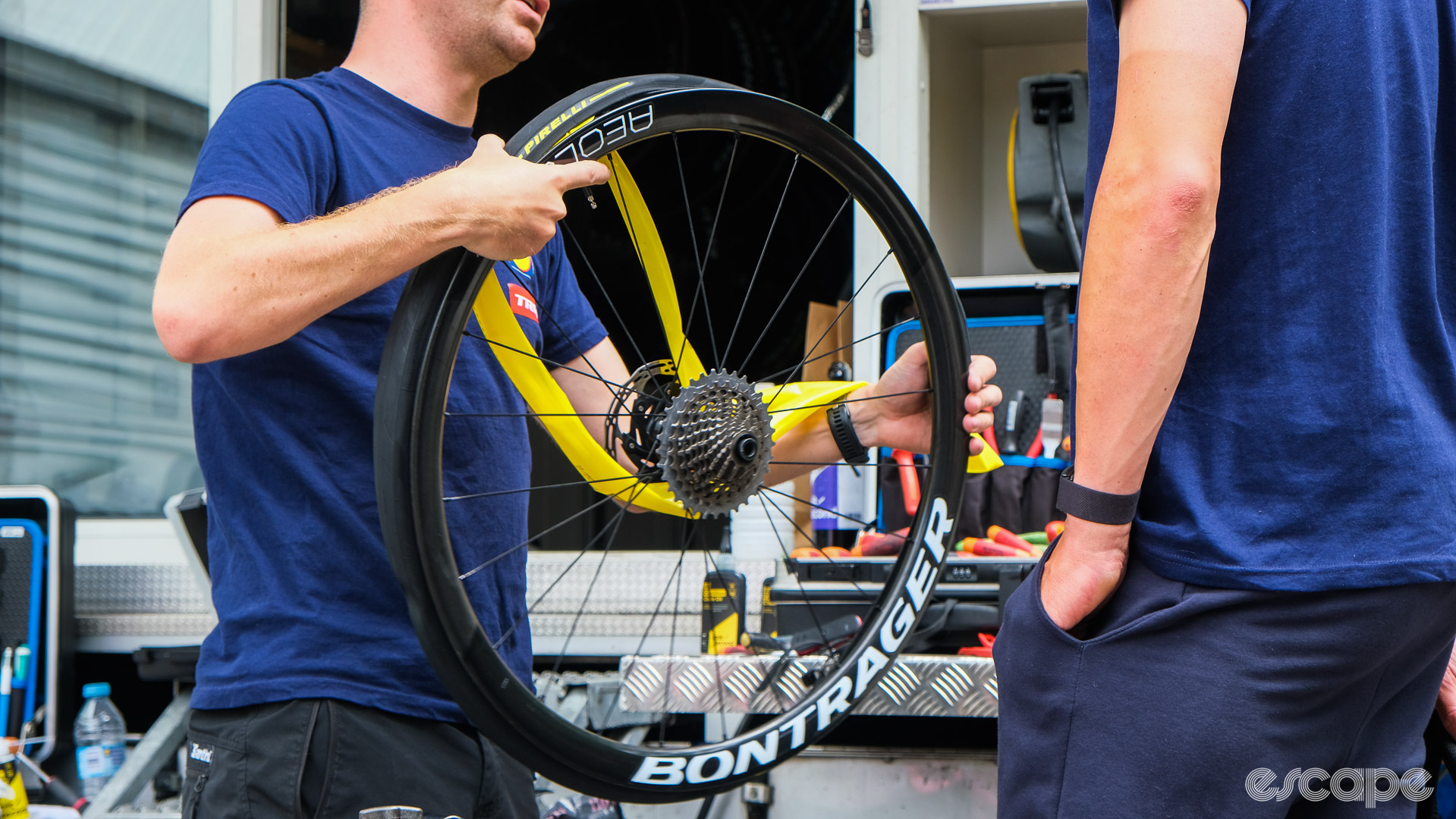
Not everyone is running tubeless. Lidl-Trek had a mix of tubeless and clinchers fitted with Pirelli’s SmarTube lightweight TPU inner tubes.
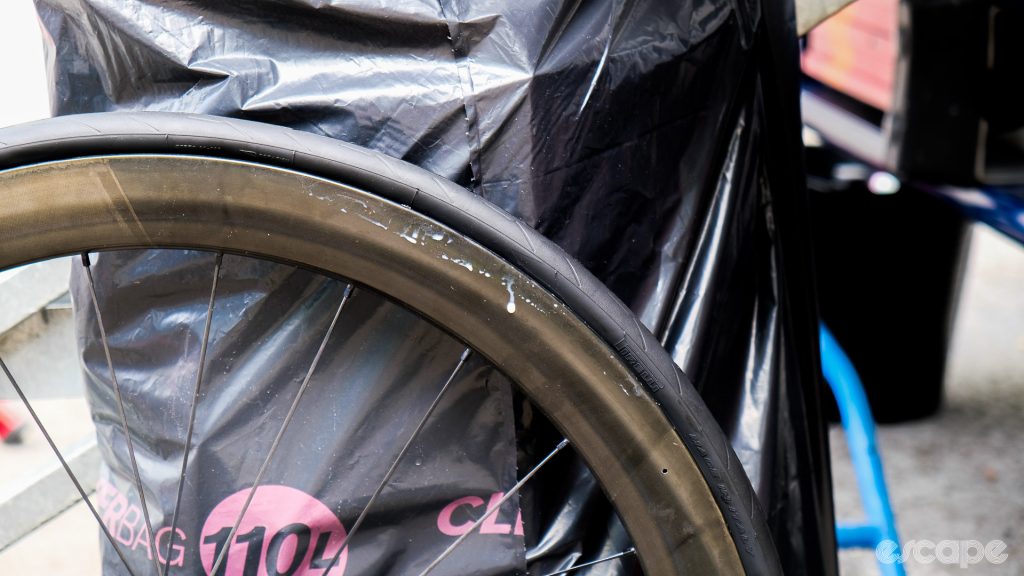
Others were on tubeless, though.
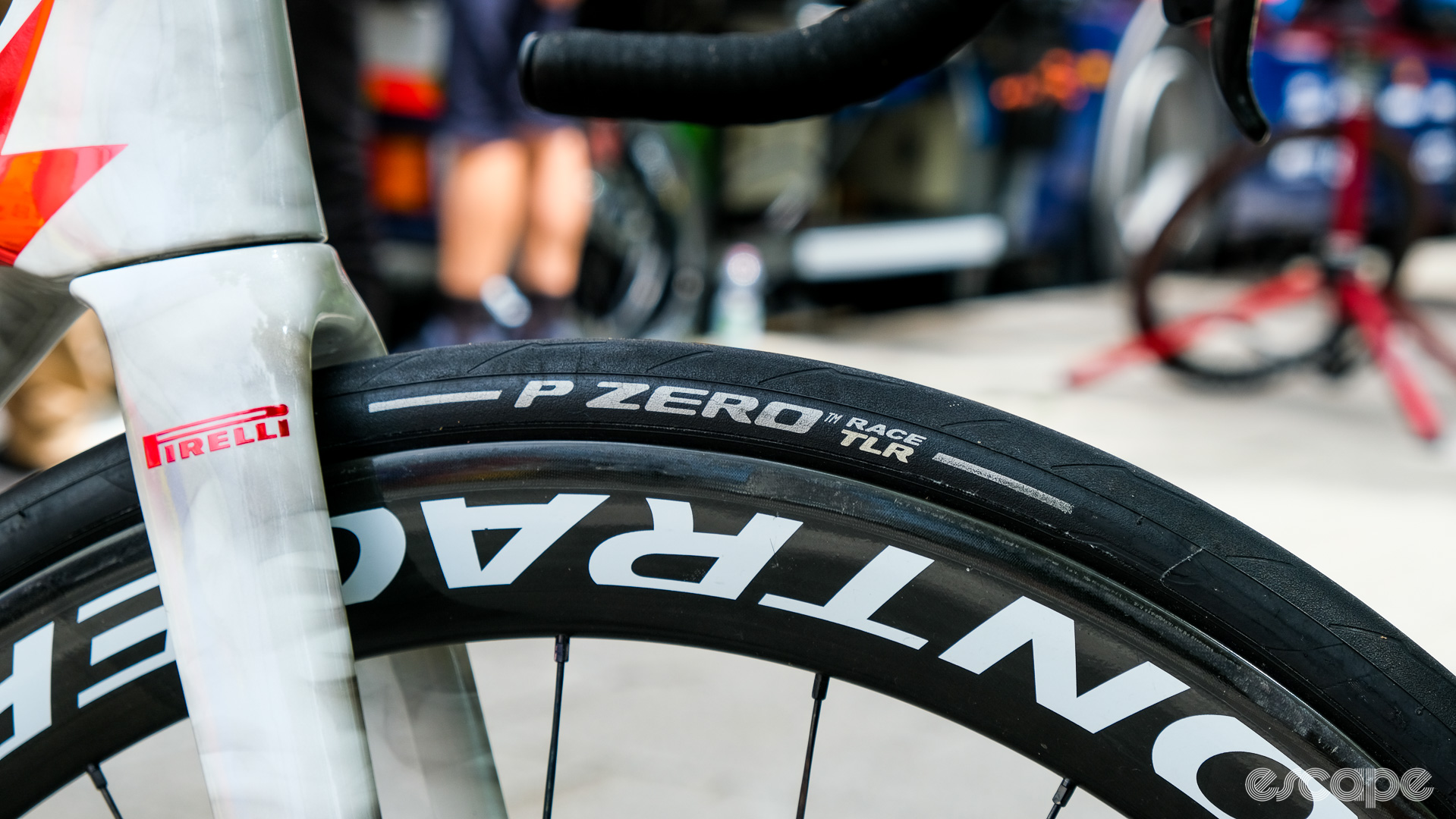
Tony Gallopin and Mattias Skjelmose were both running tubeless setups with Pirelli’s P-Zero Race TLR tyres marked 28 mm and measuring 30 mm on Bontrager’s RSL 51 wheels with 23 mm internal rim. Alex Kirsch’s 28 mm tyres measured 29 mm on Bontrager’s RSL 37 rims with a 21 mm internal width.

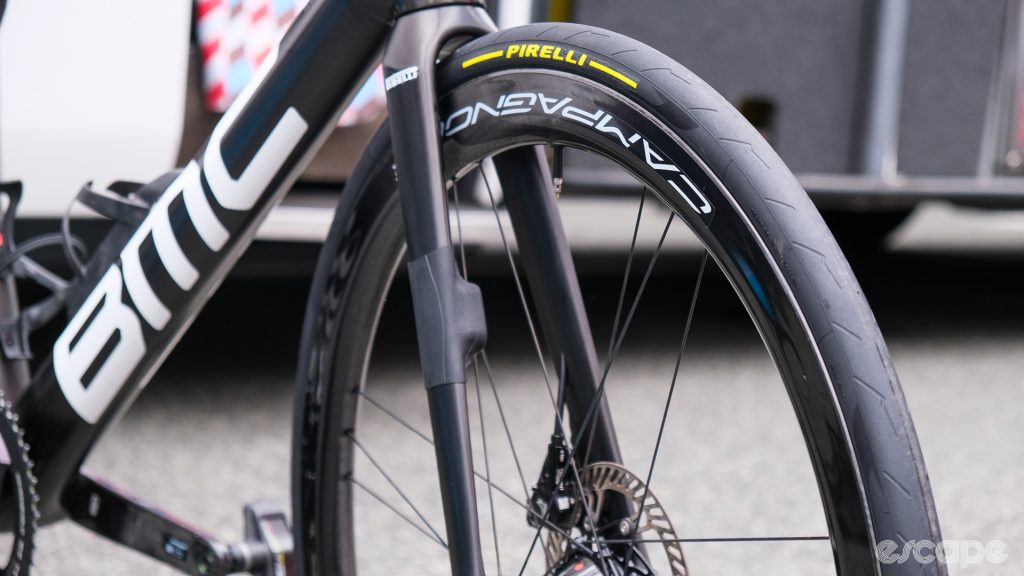
AG2R Citroën is another team using Pirelli tyres. We measured Benoît Cosnefroy’s P-Zero Race tyres at 28 mm, matching the marked measurement on the tyre.

Tobias Halland Johannessen and the Uno-X squad are racing with Schwalbe Pro Ones stamped 25 mm but measuring 27 mm wide on DT Swiss ARC rims.
While we didn’t get a photo of his setup, we measured the Vittoria Corsa Pro on Jayco-AlUla’s Chris Harper’s bike at 30 mm – a 2 mm bump on the noted 28 mm width.
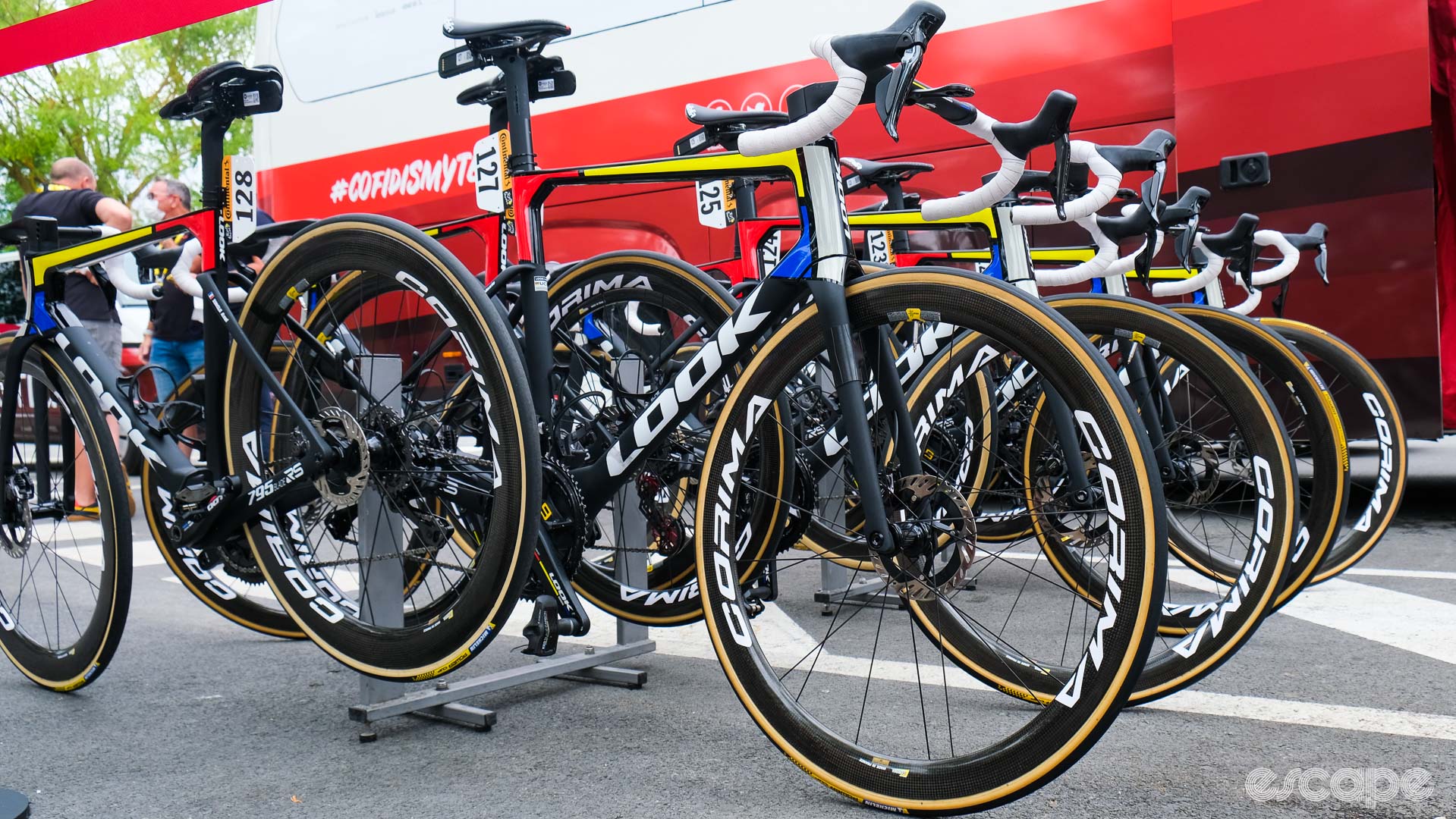
Cofidis was the only team running exclusively on tubulars when we ran around testing at the start of stage 2. Axel Zingle was riding 25 mm-wide tubs and Ion Izagirre was on 28s.
While those black rubber rings will never be the most exciting of discussing topics, they will always be the single point of contact between bike and road (all going well). The WorldTour peloton has long since copped on to the marginal gains in running wider and softer tyres. That trend may have slowed a little as most teams converge on the 28 mm solution. But as our findings here prove, a 28 is rarely just a 28 with tyres still growing as internals rims get wider and wider.
What did you think of this story?
